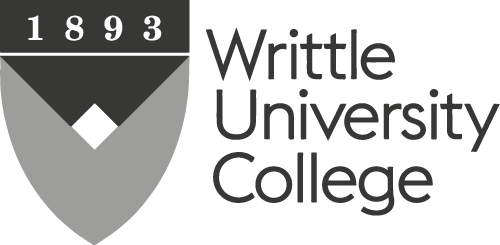



DOWNLOAD CURATORIAL STATEMENT
SEE IMAGES FROM THE PRIVATE VIEW
Feature image: Jeremy Hutchison, Movables, 2017. Photo courtesy of the artist.
We live in a time of stark and often violent paradoxes: the increasing liberalisation of social values in some parts of the world compared to increasing fundamentalism in others; the wealth of scientific discovery and technological advances in contrast to climate denialism, “post-factual” and conspiracy-driven politics; freedom of movement for goods and finance while individual movement is ever more constricted and subject to law; a drive towards agency, legibility and transparency of process while automation, computerisation and digitisation, render more of the world opaque and remote. At every level, mass movement of peoples and the rise of planetary-scale computation is changing the way we think and understand questions of geography, politics, and national identity.
These ever-increasing contradictions are seen most acutely at the border. Not merely the border between physical zones and between nation states, with their differing legal jurisdictions and requirements for entry and residency, but also the border between the physical and digital, when we apparently – but perhaps misleadingly and certainly temporarily – cross over into a different zone of possibility and expression.
This contradiction is also clear in the balkanisation of newly independent and fragmenting states, and in the rising current of nationalism across Europe, which seems to run in parallel to, and might even be accelerated by, digital connectivity. Some of the most outwardly regressive powers themselves employ what Kremlin theorist Vladislav Surkov has called “non-linear strategy”: a strategy of obfuscation and deliberate contradiction clearly indebted to the convolutions and confusions of the digital terrain – and of art. As ever more varied expressions of individual identity are encouraged, revealed, made possible and validated by online engagement, so at the same time a desperate rearguard action is being fought to codify and restrain those identities – online and off. These new emergent identities are, inevitably and by necessity, transient and contingent, slippery and subject to change and redefinition.
The artists featured in Transnationalisms address the effect of these pressures on our bodies, our environment, and our political practices. They register shifts in geography as disturbances in the blood and the electromagnetic spectrum. They draw new maps and propose new hybrid forms of expression and identity. In this exhibition Transnationalisms acknowledges and even celebrates the contradictions of the present moment, while insisting on the transformative possibilities of digital tools and networks on historical forms of nationalism, citizenship, and human rights. While the nation state is not about to disappear, it is already pierced and entangled with other, radically different forms. Alternative models and protocols of citizenship, identity, and nationhood are being prototyped and distributed online and through new technologies. Transnationalisms examines the ways in which these new forms are brought into the physical world and used to disrupt and enfold existing systems. It does not assume the passing of old regimes, but proclaims the inevitability of new ones, and strives to make them legible, comprehensible, and accessible.
Raphael Fabre CNI, 2017
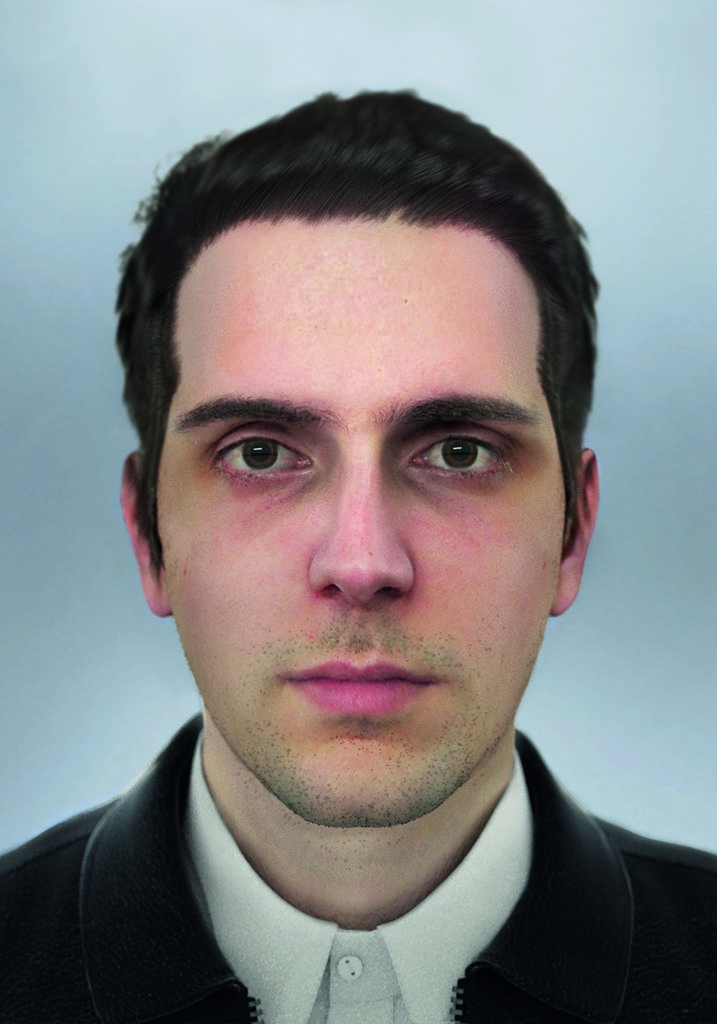
On April 7th, 2017, Raphael Fabre submitted a request for a French ID card. All of his papers were deemed to be legal and authentic and so the demand was accepted and a new national ID card was issued. In fact, the photo submitted to accompany this request was created on a computer, from a 3D model, using several different pieces of software and special effects techniques developed for movies and video games. Just as our relationship with governments and other forms of authority is increasingly based on digital information, so the image on the ID is entirely virtual. The artist’s self-portrait suggests the way in which citizens can construct their own identities, even in an age of powerful and often dehumanising technologies.
Jeremy Hutchison Movables, 2017
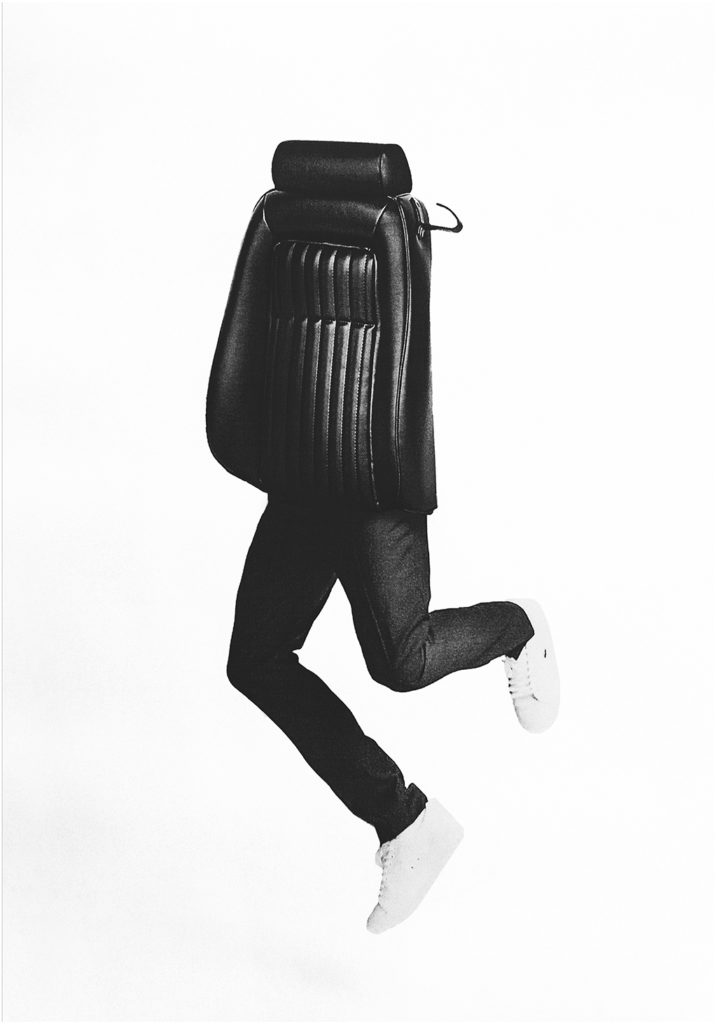
The starting point for this work was a found photograph, taken by police at a border point somewhere in the Balkans. It showed the inside of a Mercedes, the headrests torn open to reveal a person hiding inside each seat. This photograph testifies to a reality where human bodies attempt to disguise themselves as inanimate objects, simply to acquire the same freedom of movement as consumer goods. Movables translates this absurdity into a series of photo collages, combining elements of high-end fashion and car adverts, enacting an anthropomorphic fusion between the male form and the consumer product. The results are disquieting yet familiar, since they appropriate a visual language that saturates our everyday urban surroundings, highlighting the connections between transnational freedoms and limitations, and international trade.
They Are Here
We Help Each Other Grow, 2017
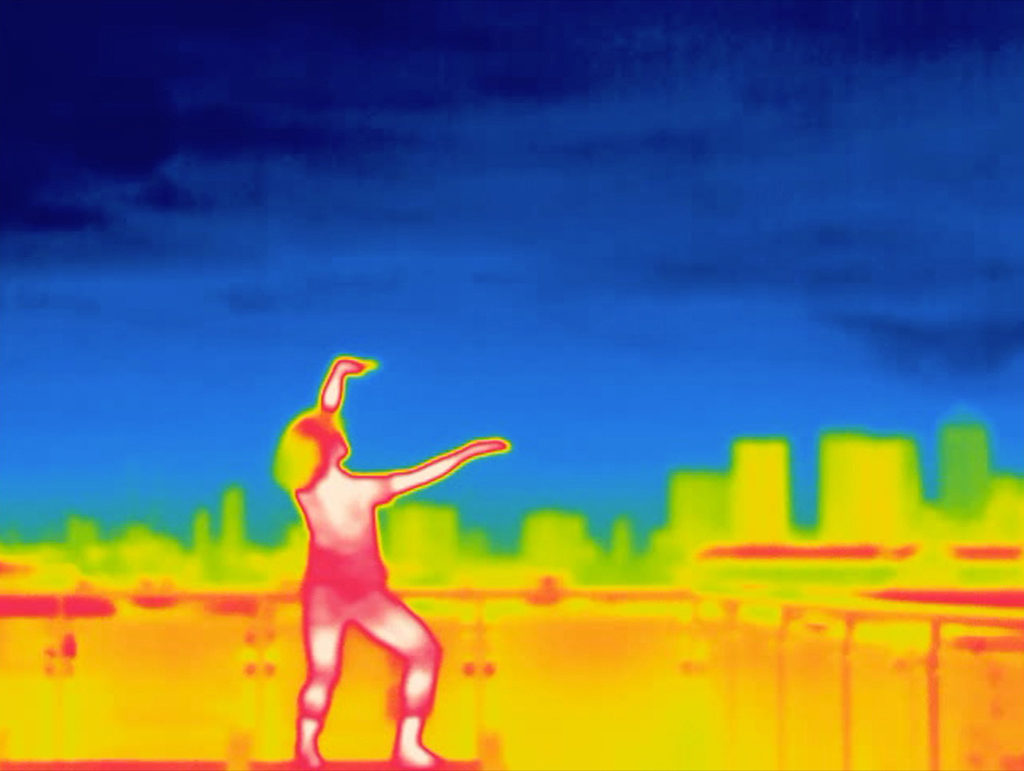
Thiru Seelan dances on an East London rooftop, looking out towards the skyline of the Canary Wharf financial district. His movements are inspired by the dance form Bharatanatyam, traditionally only performed by women and taught to Thiru in secret by his younger sister. Thiru is a Tamil refugee and when he arrived in the UK in 2010, following six months of detention in Sri Lanka during which he was tortured for his political affiliations, Canary Wharf was his first home. His movement is recorded by a heat sensitive camera more conventionally used as surveillance technology and deployed to monitor borders and crossing points, where bodies are recorded and captured through their thermal signature. The song ‘We’ve helped each other grow’, composed and performed by London based Mx World, was chosen with Thiru to soundtrack the performance. Mx is a prefix that does not indicate gender. In the UK, it can be used on many official documents – including passports. The repeated refrain, ‘We’ve helped each other grow’ suggests a communal vision for self and social development.
Daniela Ortiz
Jus Sanguinis, 2016
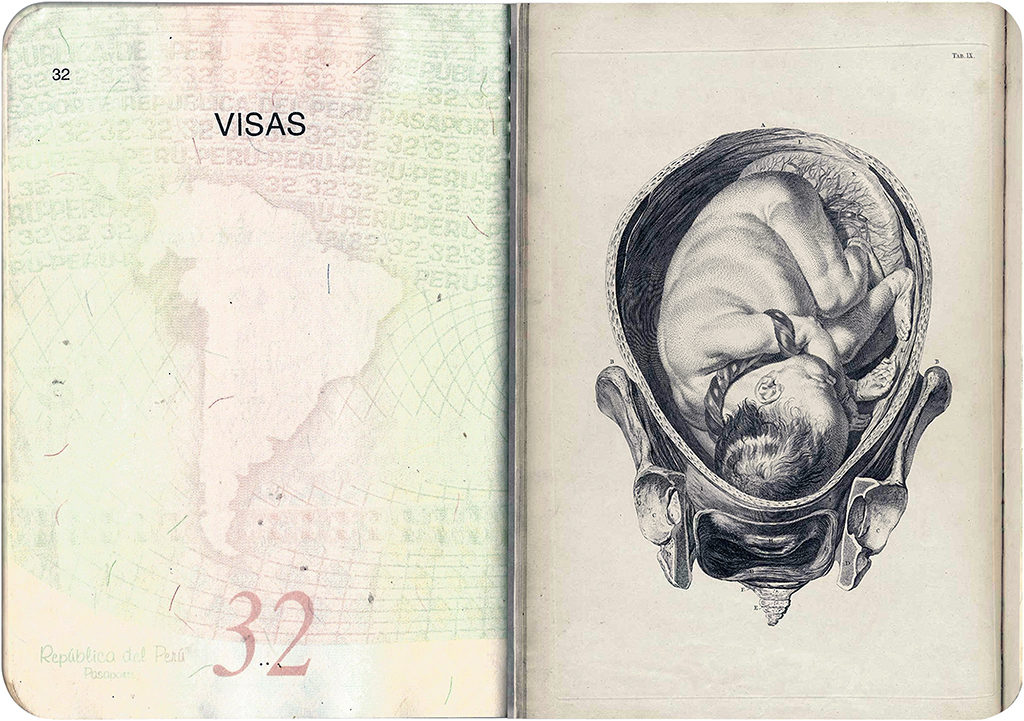
Jus sanguinis, meaning ‘the right of the blood’, is one of the main ways in which people acquire citizenship: from the blood of their parents. Daniela Ortiz is an artist of Peruvian descent living in Spain, where only babies with Spanish blood are recognized as subjects with the right to the nationality at the moment of the birth. As a result, her child would not have access to Spanish nationality. In this performance, undertaken when Ortiz was four months pregnant, she receives a blood transfusion from a Spanish citizen, directly challenging the racist and nationalist regime of citizenship which would classify her Spanish-born child as an immigrant.
The Critical Engineering Working Group (Julian Oliver and Danja Vasiliev)
VPN, 2018
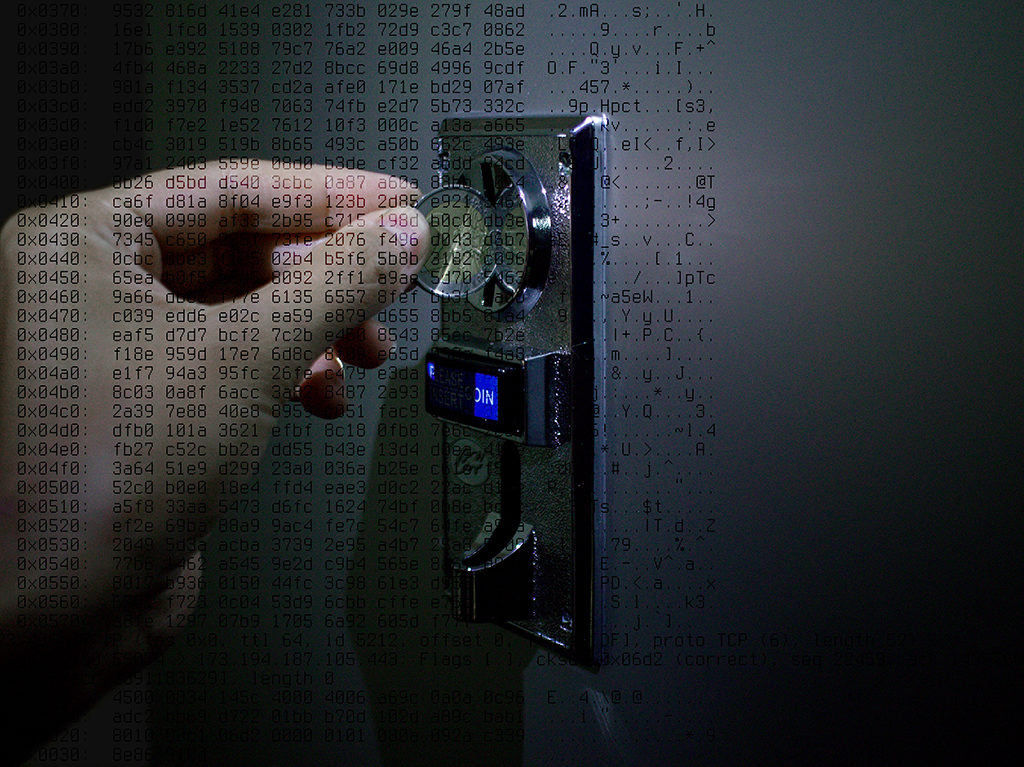
Virtual Private Networks (VPNs) have come into increasing demand in recent years, providing route encryption through hostile networks. In China, Vietnam, Turkey and Pakistan they also serve to mitigate government censorship, so that foreign sites otherwise blocked by state firewalls are made available to VPN users (Twitter, Facebook, Wikipedia, activist sites and digital libraries being the most common).
Vending Private Network takes the form of a condom vending machine, such as those typically seen in toilets. Equipped with mechanical buttons, a coin-slot and USB ports, it offers 4 VPN routes, each adorned with an animated graphic depicting a fantasy destination. Audiences are invited to insert a USB stick into the slot, and a coin into the machine, then to select a VPN destination by pressing a mechanical button, a unique VPN configuration file is then written onto their USB stick. Special instructions (in the form of a README.txt) will also be copied to the USB stick that explain how to use the VPN in a special ‘sheathed’ mode that evades detection methods (namely Deep Packet Inspection, or DPI) used by corporations and state-controlled infrastructure administrators. This is the only means known to work against state controlled firewalls, for instance and requires an extra install of freely available, open source software and leverage economic and cultural privilege to benefit those not included. With each VPN config generated, another is covertly shipped to contacts in Turkey, China, Vietnam and Iran (and other countries to be confirmed).
Jonas Staal New Unions, 2016
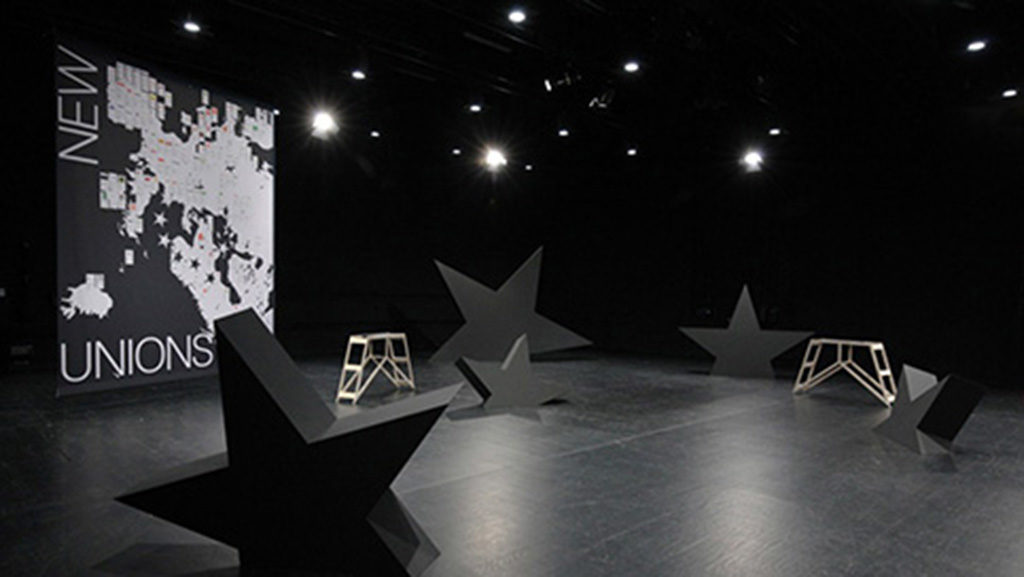
Jonas Staal’s New Unions is an artistic campaign supporting progressive, emancipatory, and autonomist movements all over Europe, and proposing the creation of a “transdemocratic union” which is not limited by the boundaries of nation states. The New Unions map illustrates the recent, massive rise in social movements and new political parties which are creating new models of political assembly and decision making while challenging traditional national and institutional structures. From the civil initiative in Iceland to collectively rewrite the constitution after the economic crash, to regional independence movements and pan-European solidarity groups, these emerging political experiments propose new forms of transdemocratic practices. This map is the first in a series which is continuously updated to reflect the evolving geography of transdemocracy.
The Critical Engineering Working Group is a collaboration between Julian Oliver and Danja Vasiliev. Their manifesto begins: “The Critical Engineer considers Engineering to be the most transformative language of our time, shaping the way we move, communicate and think. It is the work of the Critical Engineer to study and exploit this language, exposing its influence.”
criticalengineering.org
Raphaël Fabre works on the interference of fictions and narrative storytelling in the real world, using techniques ranging from digital 3D technologies to set decoration. Born in 1989, he lives and works in Paris.
raphaelfabre.com
Jeremy Hutchison works with situational performance. Operating in sites of production and consumption, he often collaborates with factory employees, migrant labourers, online workers and jobseekers to examine the structures that limit human existence. How are unequal human relations constructed by global capital? How do consumer products function as portraits of exploitative material structures? In the process of developing these works, each context becomes a stage; a metaphor for the production of reason. To some extent, his projects are rehearsals for an uncertain kind of freedom. He was recently a member of the Whitney Independent Study Program in New York.
jeremyhutchison.com
Daniela Ortiz (Cusco, 1985) lives and works in Barcelona. Through her work, she generates spaces of tension in which the concepts of nationality, racialization, social class and gender are explored in order to critically understand structures of inclusion and exclusion in society. Her recent projects and research revolve around the issue of migration control, its links to colonialism, and its management by Europeanwhite states and societies. At the same time, she has produced projects about the Peruvian upper class and its exploitative relationship with domestic workers. Daniela gives talks and participates in discussions on Europe’s migration control system and its ties to coloniality in different contexts.
daniela-ortiz.com
Jonas Staal lives and works in Rotterdam (NL). He has studied monumental art in Enschede (NL) and Boston (US) and received his PhD for research on Art and Propaganda in the 21st Century from the University of Leiden (NL). His work includes interventions in public space, exhibitions, theater plays, publications and lectures, focusing on the relationship between art, democracy and propaganda. Staal is the founder of the artistic and political organization New World Summit and, together with BAK, basis voor actuele kunst, Utrecht (NL), of the New World Academy.
jonasstaal.nl
They Are Here (f. 2006) is a collaborative practice steered by Helen Walker and Harun Morrison. They are currently based in London and on the River Lea. Their work can be read as a series of context specific games. The entry, invitation or participation can be as significant as the game’s conditions and structure. Through these games, they seek to create ephemeral systems and temporary, micro-communities that offer an alternate means of engaging with a situation, history or ideology. In parallel, they initiate multiyear socially engaged projects that become generative spaces for further works. They Are Here work across media and types of site, particularly civic spaces.
theyarehere.net
James Bridle is an artist and writer working across technologies and disciplines. His artworks and installations have been exhibited in Europe, North and South America, Asia and Australia, and have been viewed by hundreds of thousands of visitors online. He has been commissioned by organisations including the Victoria & Albert Museum, the Barbican, Artangel, the Oslo Architecture Triennale, the Istanbul Design Biennial, and been honoured by Ars Electronica, the Japan Media Arts Festival, and the Design Museum, London. His writing on literature, culture and networks has appeared in magazines and newspapers including Frieze, Wired, Domus, Cabinet, the Atlantic, the New Statesman, and many others, in print and online, and he has written a regular column for the Observer. “New Dark Age”, his book about technology, knowledge, and the end of the future, is forthcoming from Verso (UK & US) in 2018. He lectures regularly on radio, at conferences, universities, and other events, including SXSW, Lift, the Global Art Forum, Re:Publica and TED. He was been a resident at Lighthouse, Brighton, the White Building, London, and Eyebeam, New York, and an Adjunct Professor on the Interactive Telecommunications Programme at New York University.
jamesbridle.com
Furtherfield is an internationally-renowned digital arts organisation hosting exhibitions, workshops and debate for over 20 years. We collaborate locally and globally with artists, academics, organisations and the public to explore digital culture and the changing world we live in. From our unique venues in Finsbury Park we offer a range of ways for everyone to get hands on with emerging technologies and ideas about contemporary society. Our aim is to make critical digital citizens of us all. We can make our own world.
Furtherfield Gallery
McKenzie Pavilion
Finsbury Park, London, N4 2NQ
Visiting Information
This project has been funded with the support from the European Commission. This communication reflects the views only of the author, and the Commission cannot be held responsible for any use which may be made of the information contained therein.
Transnationalisms is realised in the framework of State Machines, a joint project by Aksioma (SI), Drugo More (HR), Furtherfield (UK), Institute of Network Cultures (NL) and NeMe (CY).
The Alternative UK write about Transnationalisms: We live in an age of transnationalisms. At Furtherfield, artists test all the borders


